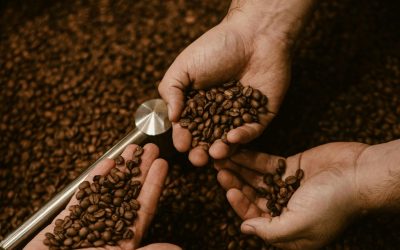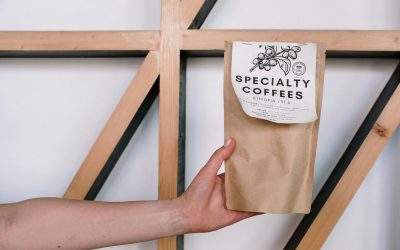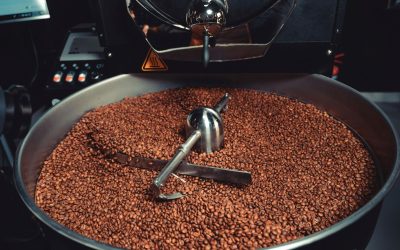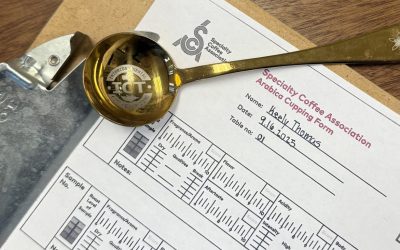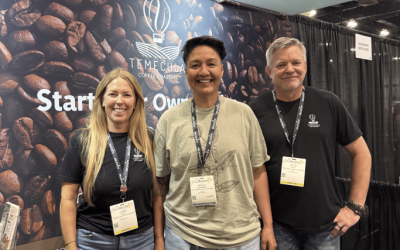News & Trends
World Coffee Research F1 Hybrids Cupping
The future of coffee is happening right now, and we had the privilege of tasting it firsthand. At ICT Coffee, our Quality Control and...
Understanding Coffee Certifications
Coffee certifications can be confusing. Logos stack up on bags, acronyms get tossed around, and it is not always clear what each one means...
Roasting for Cupping vs. Production: Two Different Approaches
One of the most important distinctions every roaster must understand is the difference between roasting for cupping and roasting for...
Regenerative Agriculture in Coffee: What Every Coffee Professional Should Know
Coffee producers worldwide are adopting a farming approach called "regenerative agriculture" that's changing how we think about...
Maximizing Your Coffee Descriptions
Coffee bag descriptions should match your target customer and business goals. Three main approaches—minimalist (focusing on taste and roast level for busy customers), educational (moderate detail for enthusiasts), and storytelling (detailed narratives for premium positioning)—each serve different markets. Success requires aligning your chosen strategy with staff training, sourcing consistency, packaging design, and supplier partnerships to create descriptions that inform, sell, and build customer relationships.
How Growing Conditions Shape Coffee
Coffee growing conditions—altitude, soil composition, rainfall patterns, sunlight exposure, and microclimates—fundamentally shape flavor profiles and bean characteristics. Higher elevations produce denser beans with sharper acidity and complexity, while lower altitudes yield softer beans with rounder body. Volcanic soils provide mineral-rich nutrition for flavor clarity, while shade-grown systems concentrate sugars and create balanced acidity. Understanding these environmental factors helps roasters select appropriate coffees and adjust roasting approaches based on bean density, sugar levels, and moisture content.
Developing Consistent Profiles Across Batches
Batch-to-batch roasting consistency requires meticulous documentation, origin-specific profiles, and strategic use of roasting software. Key practices include tracking rate of rise curves, recording critical milestones like turnaround time and first crack, maintaining precise batch weights, and adjusting profiles as coffee ages. Modern tools like Cropster, Artisan, and RoastPath provide data visualization and profile comparison capabilities, while regular cupping validates consistency efforts and identifies when adjustments are needed.
Decaffeinated Coffee Sourcing: Quality and Processing Considerations
High-quality decaffeinated coffee requires careful sourcing and process selection. Modern decaffeination methods—including Swiss Water, Methylene Chloride, Mountain Water, Sugarcane, and CO2 processes—each offer unique flavor profiles and marketing advantages. The key to exceptional decaf starts with selecting high-quality green coffee before processing, understanding how each method affects flavor characteristics, and adjusting roasting profiles to account for structural changes in decaffeinated beans.
Q Grading vs. CVA: What’s Changing in Coffee Evaluation and Why It Matters for Your Business
The Specialty Coffee Association’s new Coffee Value Assessment (CVA) system works alongside traditional Q grading to provide comprehensive coffee evaluation. While Q grading scores coffees on a 100-point scale for quality benchmarking, CVA adds three critical dimensions: descriptive assessment of taste characteristics, affective assessment of market preferences, and extrinsic assessment of sustainability and story elements. Together, these systems give roasters better purchasing information and strategic sourcing capabilities beyond simple quality scores.
Building Customer Education Programs in Coffee
Customer education transforms specialty coffee from an everyday habit into a valued relationship. When roasters teach customers about origin, processing, and quality through cuppings, brew workshops, storytelling, and digital content, they build loyalty that goes beyond price. Educated customers understand why elevation affects acidity, how processing changes flavor, and why certain coffees cost more. This knowledge positions them as part of a community that values craftsmanship and sustainability rather than viewing coffee as a commodity.



